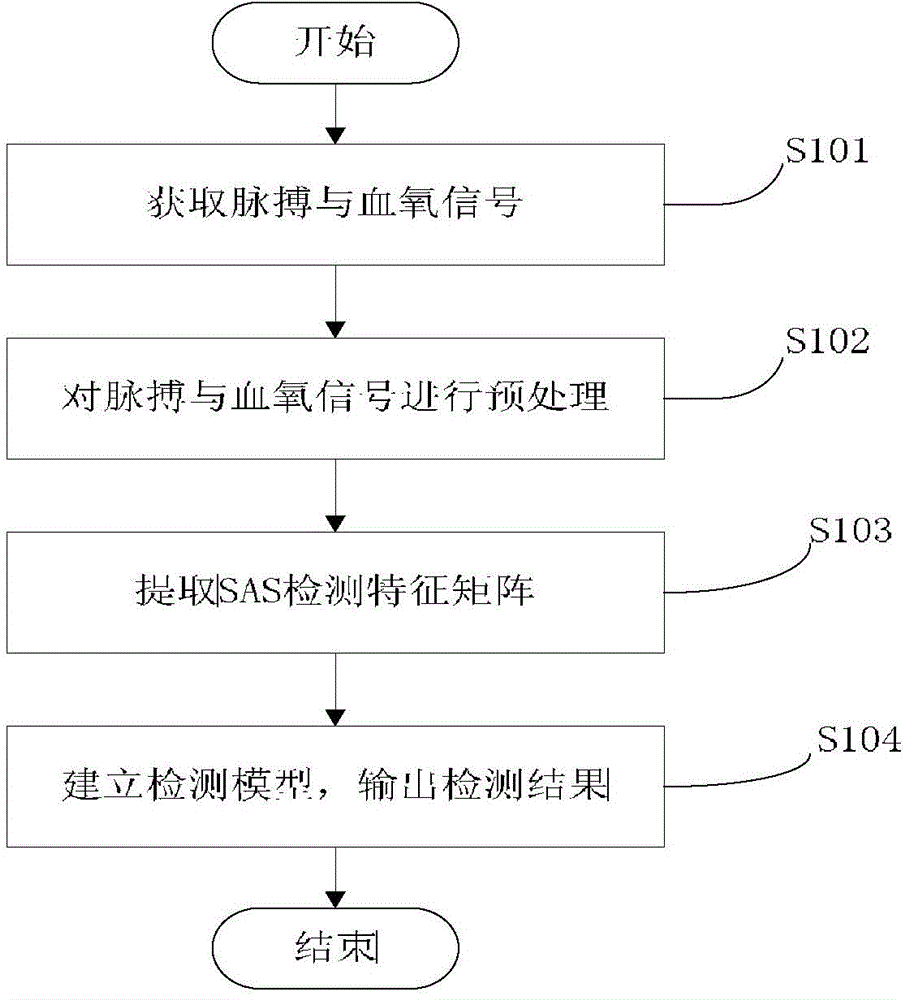Sleep apnea syndrome detection method based on pulse and blood oxygen signals
A technology for sleep apnea and detection methods, which is applied in blood characterization devices, diagnostic recording/measurement, medical science, etc., and can solve the problems of detection accuracy that needs to be improved and few physiological parameters
- Summary
- Abstract
- Description
- Claims
- Application Information
AI Technical Summary
Problems solved by technology
Method used
Image
Examples
Embodiment Construction
[0009] In order to make the technical solution of the present invention clearer, the implementation manner of the present invention will be further described in detail below in conjunction with the accompanying drawings.
[0010] refer to figure 1 Shown is a flow chart of the detection method for sleep apnea syndrome based on the pulse and blood oxygen signals of the present invention.
[0011] Step S101, acquiring pulse and blood oxygen signals.
[0012] Specifically, the pulse and blood oxygen signals of the subjects were continuously recorded throughout the night in a natural sleep state.
[0013] Step S102: Preprocessing the pulse and blood oxygen signals. Specific steps are as follows:
[0014] The collected pulse and blood oxygen signals are divided into minutes to form pulse and blood oxygen signals per unit time, and the binary wavelet modulus maximum algorithm is used to locate the pulse peak per unit time, and the peak-to-peak interval is calculated. The non-unif...
PUM
 Login to View More
Login to View More Abstract
Description
Claims
Application Information
 Login to View More
Login to View More - R&D
- Intellectual Property
- Life Sciences
- Materials
- Tech Scout
- Unparalleled Data Quality
- Higher Quality Content
- 60% Fewer Hallucinations
Browse by: Latest US Patents, China's latest patents, Technical Efficacy Thesaurus, Application Domain, Technology Topic, Popular Technical Reports.
© 2025 PatSnap. All rights reserved.Legal|Privacy policy|Modern Slavery Act Transparency Statement|Sitemap|About US| Contact US: help@patsnap.com


